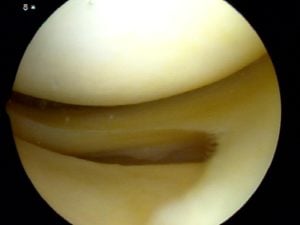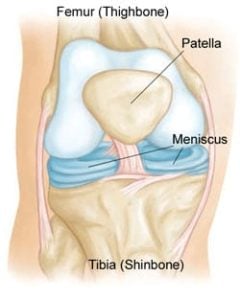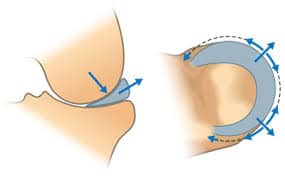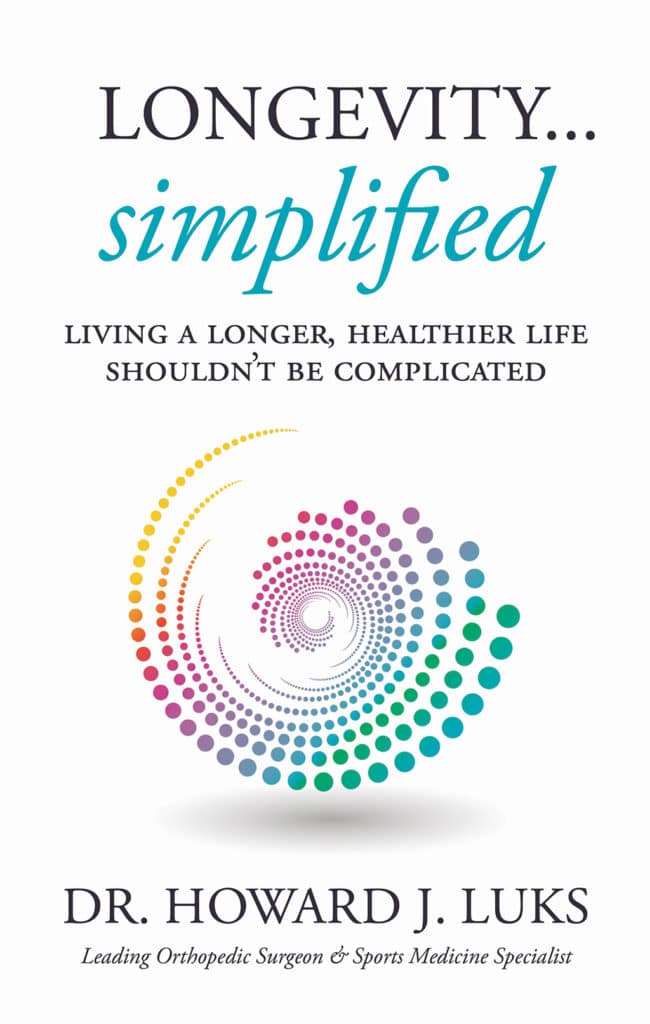The meniscus acts as a significant cushion or shock absorber in your knee. A meniscus is a c-shaped disc of soft cartilage that sits between the femur and the tibia. When the meniscus tears that cushioning effect functions poorly, that might lead to arthritis and knee pain.
There are many structures within the knee that can cause pain. By far, one of the most common causes of knee pain is a meniscus tear. I see many patients with a meniscus tear and wish to have a second opinion. When I ask them if they know what a meniscus is… they aren’t typically accurate with their description. For you to make an informed decision about how to treat your tear, it is essential that you have a good understanding of what a meniscus is and what your treatment options are. Let’s begin.
What is a Meniscus?

A meniscus is a crescent or “c”-shaped cartilage disk that’s found in the knee. There are two menisci in each knee. We have one on the inner side of the knee which we call the medial meniscus and one on the outer side of the knee which we call the lateral meniscus. The menisci serve a very important function in the knee.
Our meniscus functions as a shock absorber or cushion to minimize the stress on another type of cartilage that we have in the knee which we call the articular cartilage. The articular cartilage coats the ends of our bones within a joint. By protecting the articular cartilage, the meniscus helps prevent the onset of arthritis.
The meniscus also serves to improve the stability of the knee. The meniscus acts like a block stuck behind a tire to stop a car from rolling. If you do not have a normal meniscus, the knee may feel unstable.
See below for a long list of related articles for further reading about meniscus tears.
Understanding “what is a meniscus,” enables you to understand how a tear can affect your knee
If a friend tells you they have a “torn cartilage” they are probably referring to a torn meniscus. When the meniscus is not functioning correctly, or it is split, then you may feel pain with turning, pivoting or twisting. Also, you may develop a feeling of knee instability or a feeling that the knee wants to give way.
Unfortunately, the meniscus does not possess significant regenerative capabilities. That means that the meniscus tissue can wear out over time.
Because the body does not possess the ability to heal a meniscus (like a cut on your skin) these tears rarely heal on their own. When a tissue has poor regenerative potential, the likelihood of suffering a degenerative or attritional meniscus tear is very high. Simply stated that means that our meniscus can simply wear out and tear from the cumulative stress that we have put on our knee throughout our lives.
That’s why the majority of you do not recall any specific injury to the knee when I see you in the office.
The meniscus is a shock absorber
The meniscus functions as a shock absorber. In the picture to the right, you can see how weight-bearing or walking forces the meniscus to move towards the outside of the knee when pressure is applied. This is how the meniscus takes the stress off of the articular cartilage on the end of the bones. We call these hoop stresses. As you put weight on the leg, the femur or thigh bone contacts the meniscus. The meniscus distends outward. That takes a lot of the stress off of the tibia or shin bone. Without a meniscus present, all the weight from the femur would contact the tibia, and the cartilage on the ends of the bones would start to wear away.

The image at left reveals a normal meniscus sitting between the femur above and the tibia below. The meniscus is a C-shaped structure in your knee that is made of fibro-cartilage. It acts as a cushion for the knee when it’s bearing weight.
Most meniscal tears in adults are degenerative …
that is, the meniscus simply wore out from years of use. Most adult patients with a torn meniscus don’t even recall how or when the meniscus tear happened.
The presentation for a meniscus tear is usually entirely different in children or adolescents. Meniscus tears in children are usually traumatic and will often arise from a non-contact twisting injury.
See our posts below where we explore the different types of meniscus tears that can occur, and how we treat them. It might surprise you that many meniscus tears do not require surgery
So the next time you’re asked, what is a meniscus, you will hopefully know! :-)
Keep on learning! Recommended follow up reading:
Is surgery necessary for all meniscus tears?








